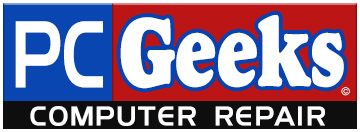Slow Computer Got You Down? Here’s How to Get It Running Like New
At PC Geeks, we understand the frustration of a slow computer. Whether you’re battling sluggish boot times, experiencing program crashes, or simply noticing a decline in overall performance, a sluggish PC can disrupt your workflow and hinder your productivity. The good news is that keeping your computer running smoothly doesn’t require a degree in computer science. By following a few simple tips and incorporating them into your regular routine, you can prevent performance issues and ensure your PC runs like a champ.

Declutter Your Digital Space: Free Up Disk Space
Just like a cluttered room can feel overwhelming, a cluttered hard drive can slow down your computer. Regularly review your files and remove anything you no longer need. This includes old documents, unused downloads, and temporary files.
Utilizing Built-in Tools: Most operating systems come with built-in disk cleanup utilities that can help identify and remove unnecessary files. Additionally, consider uninstalling programs you no longer use. Unused programs can take up valuable storage space and even run background processes, further contributing to slowdowns.
Embrace the Power of Updates: Keep Software Current
Software updates often include performance enhancements, bug fixes, and security patches. Keeping your operating system, applications, and drivers up-to-date is crucial for maintaining optimal performance and protecting your system from vulnerabilities.
Windows users: Access updates through Settings > Update & Security > Windows Update.
Mac users: Updates are available through System Preferences > Software Update.
Stop Startup Slowdown: Manage Startup Programs
Many programs like chat applications or media players are configured to launch automatically when you boot your computer. While convenient, these programs can slow down your startup time.
Windows users: Disable unnecessary startup programs through Task Manager (Ctrl+Shift+Esc) > Startup tab.
Mac users: Manage startup programs through System Preferences > Users & Groups > (Your User) > Login Items.
Give Your PC a Breather: Restart Regularly
Just like us, computers benefit from an occasional reboot. Restarting your PC clears temporary files from memory (RAM) and allows for a fresh start. Aim to restart your computer at least once a week, or more frequently if you use it heavily.
Protect Your System: Utilize Antivirus and Anti-Malware Software
Malicious software (malware) can significantly slow down your computer and even damage your files. A robust antivirus and anti-malware solution can protect your system from these threats and ensure smooth operation.
Consider a Hardware Upgrade: Invest in More RAM (if necessary)
While software optimization can significantly improve performance, there are limitations. If your computer is constantly running low on memory (RAM), it can lead to slowdowns and sluggishness. Upgrading your RAM can provide a noticeable performance boost, especially for users who run memory-intensive programs.
Bonus Tip: For a Deeper Clean (Advanced Users)
Disk Defragmentation (HDDs only): This process reorganizes fragmented files on your hard disk drive (HDD) for faster access times. Note that this is not necessary for solid-state drives (SSDs).
By following these tips and incorporating them into your regular routine, you can keep your computer running smoothly and efficiently. If you continue to experience performance issues or require further assistance, don’t hesitate to contact the expert technicians at PC Geeks and use our computer repair service. We’re always happy to help!
